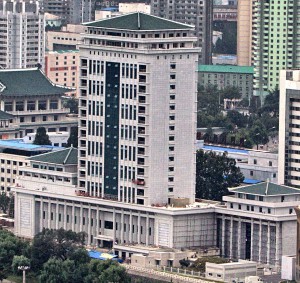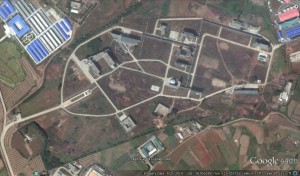Institute for Far Eastern Studies (IFES)
The December 4, 2014 issue of the Rodong Sinmun, the official newspaper of the (North) Korean Worker’s Party, repeatedly encouraged forest development, calling it a “serious issue to the nation and the people”.
The Rodong Sinmun featured an editorial entitled, “Let’s Mobilize the Party, the Army and the People to Afforest and Garden the Whole Nation,” on its first page, where it emphasized, “Now is the time to consider forest development and protection management businesses as both a serious issue and as the future destiny of the nation and the people. Now is the time for everyone to devote themselves [to this cause].”
The editorial references a remark made by the First Chairman of the National Defense Committee Kim Jong Un during his visit to the Pyongyang Central Tree Nursery, where he said, “There is no bigger crime than not attending to the forests and leaving a shell of an empty mountain for the future generations.” He continued, “Those who plant even just one more tree and tend to them like treasures are the true patriots.”
During his visit to the Central Tree Nursery on November 11, 2014, Kim Jong Un mentioned the many victims of starvation during the economic crisis of the mid-late 1990s: “Forest resources have diminished considerably. The forest was left naked and bare, and now it is too late to turn back.” This is the first time any supreme leader of the DPRK has formally acknowledged the severity of the forest destruction during that period.
With regards to the present reality in North Korea, where mountains account for nearly 80 percent of the nation’s land area, the editorial stated, “As the speed of the construction of a powerful nation grows faster, the portion of the precious forests used to secure raw materials such as lumber, textiles, paper and other ingredients necessary for improving the economy and the lives of the people greatly increases.” The editorial also mentioned the recent sustained flooding and severe droughts, emphasizing the desperate need to build up forests in order to protect against natural environmental damage.
The editorial also presented detailed methods of afforestation, adding that “Trees, which grow quickly and have large economic utility value, should be planted on terraces in large quantities so that their benefits may be reaped even one day sooner.”
Meanwhile, North Korea reportedly established the “Korean Green Sponsorship Fund” last October in order to fund research and development on green energy, resource recycling and organic farming techniques.
North Korea’s governmental news agency, the KCNA, said in a report on December 4: “The fund established last October has made it its mission to raise social awareness and contribute to green development through the representative organizations currently pursuing R&D in green energy, recycling, green food and organic farming techniques.”
North Korea made it clear that they will not discriminate between donors’ type of donation or content, nor will it discriminate against race, ethnicity, political view or the religion of donors. It also affirmed that it will reinforce close ties and cooperation with nongovernmental organizations and individual persons who wish to donate from all over the world.


